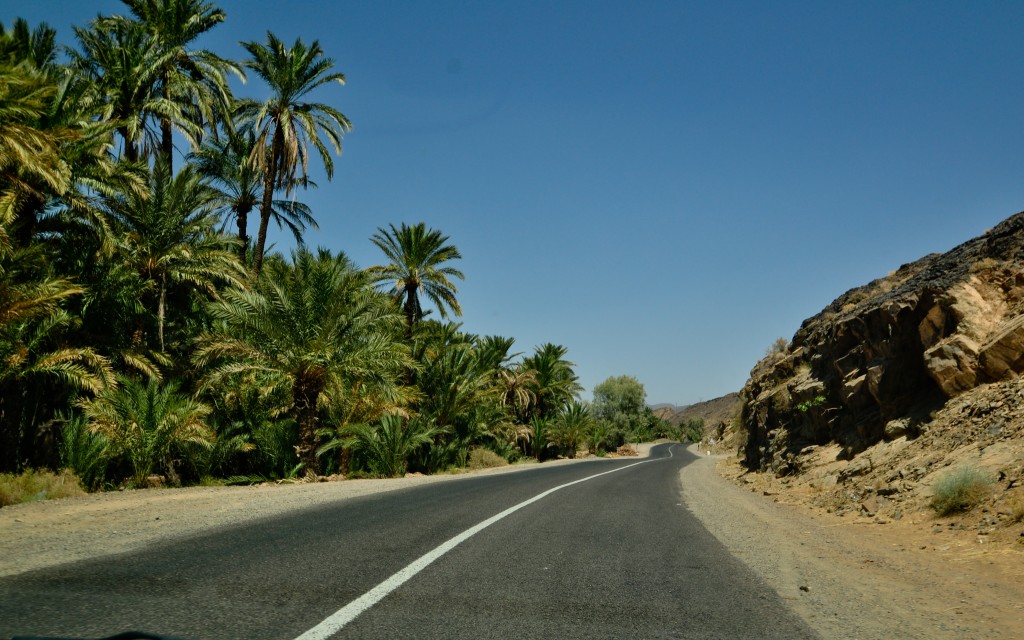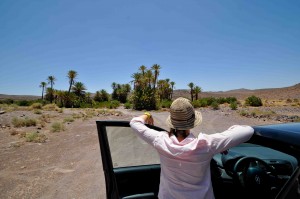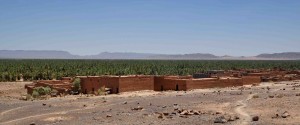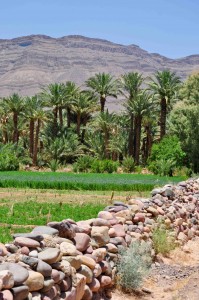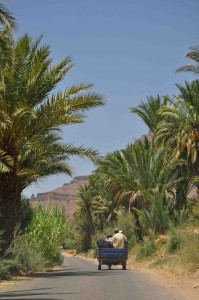My idea of what an oasis should look has been largely influenced by childhood cartoons. If you’re like me, you picture a very small pool of water surrounded by endless sand with no more than a handful of palm trees on the shore. Usually there’s a camel sitting nearby.
One of my goals for our trip to Morocco was to see an oasis firsthand. I wanted to know how closely my stereotype came to reality. The truth is: they’re not even remotely close.
Southern Morocco is full of oases, and you can see them from a mile away. Typically they’re slivers of green (not round) amid a sea of red brown desert and they’re almost always found in the cracks and low points of a hill or mountain. As water flows from the Atlas mountains, it goes underground, popping out here and there to give life to date palms, fruit trees, flowering shrubs and vegetable gardens.
Some are tiny, like the one below:
Others are huge valleys like this one:
Wherever you find an oasis, you’re almost sure to find humans living there – most of the time they’ll have cultivated land and goats or sheep will be munching on bits of verdant grass. We found several larger oases supporting plantations and even a small tourism industry like the one in Skoura, which has been dubbed “Oasis of 1,000 palms.” These large oases use clever canals and dykes to flood agricultural areas.
We imagine camel caravans spending 52 days crossing the Sahara from Timbuktu, and then arriving at one of these lush valleys. Even with only a sad little trickle of water and no pool, they must have seemed like heaven.
Bucket list checked. I’ve stayed the night in the middle of an oasis. Like many typecast sights, it was nothing like what I’d imagined. But that made it no less interesting to behold.
